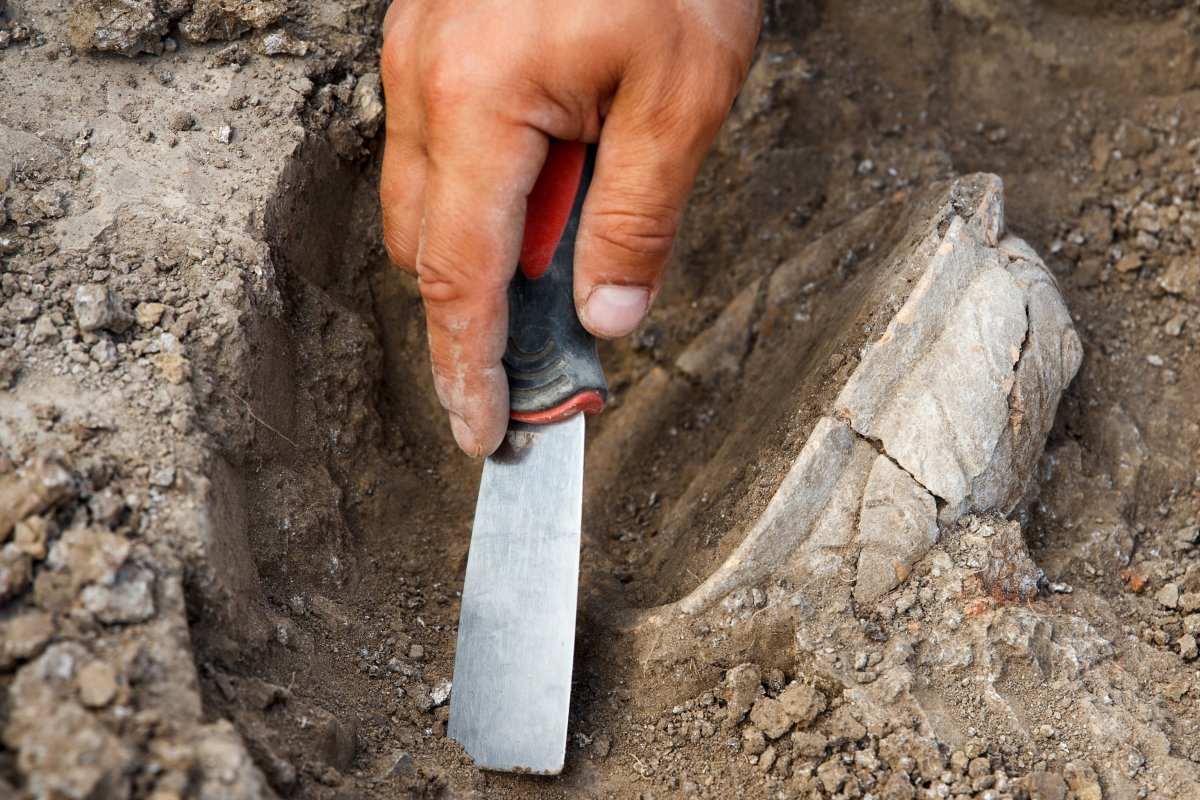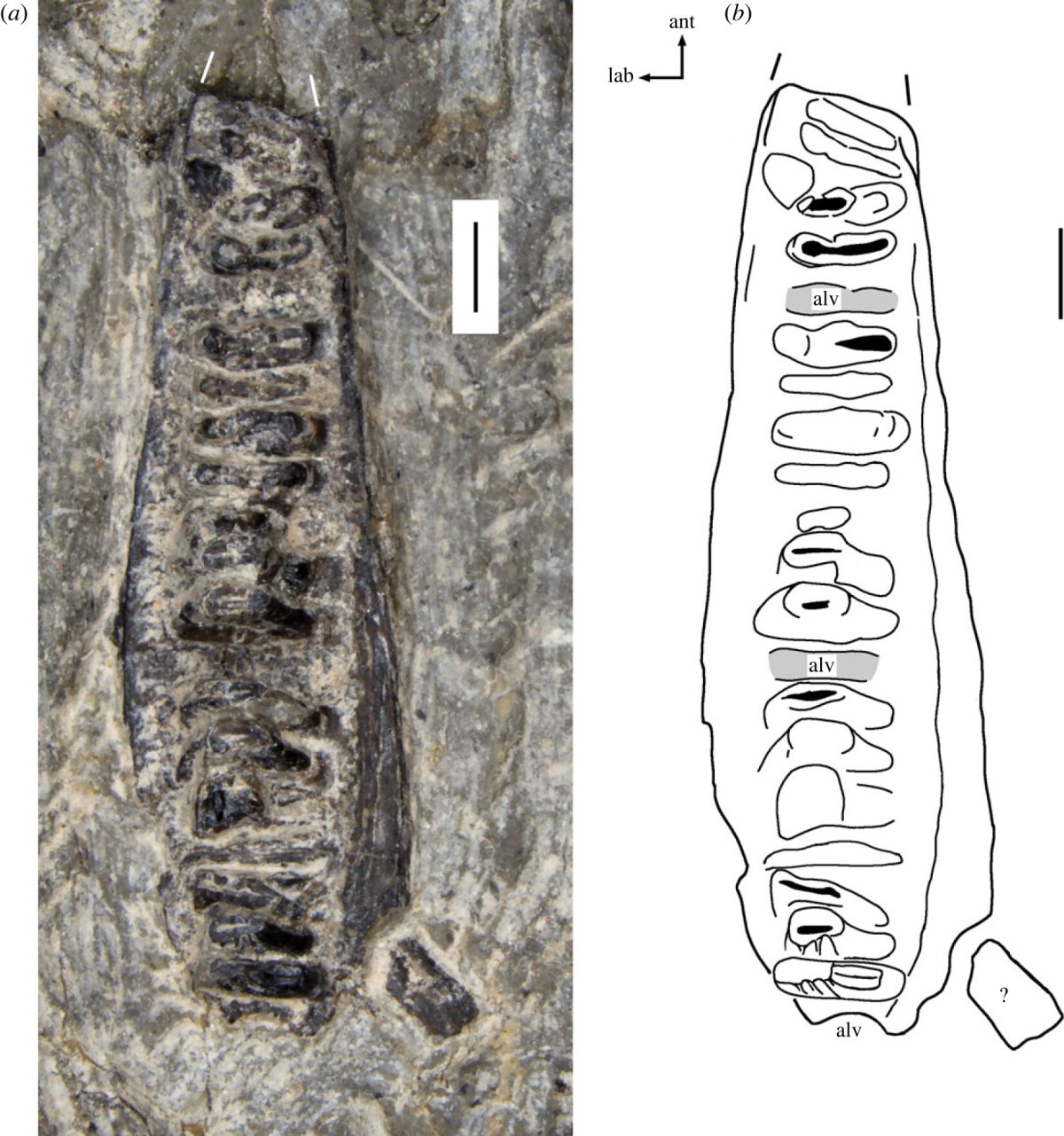A previously unknown creature that lived around 240 million years ago has been discovered by scientists in Germany.
The newly identified species, dubbed Rutiotomodon tytthos, is a trilophosaur—a group of lizard-like reptiles that roamed the Earth in the Triassic Period (roughly 252-201 million years ago) around the time that dinosaurs first appeared.
Trilophosaurs are somewhat closely related to dinosaurs, sharing a common ancestor and forming part of the same wider group of animals known as the archosauromorphs. Archosauromorphs include a sub-group called the archosaurs as well as their closest relatives. Trilophosaurs are among these related sub-groups.
In the geological past, archosaurs were represented by dinosaurs, except birds, pterosaurs, and various species closely related to these major lineages. Today, they are represented by crocodilians and birds.

Trilophosaurs were specialized omnivores and herbivores whose ecological role was subsequently filled by lizards and their relatives. Previously, trilophosaurs had only been known from fossils dating to the Late Triassic (around 237-201 million years ago) that had been found in the United States and Britain.
But the recent discovery—described in the Royal Society Open Science journal—alongside another find, expands the record of these peculiar reptiles to cover almost the entire Triassic Period. The newly identified species was described based on fossils uncovered at a limestone quarry located near the village of Eschenau, Germany.
"The new species, known from two partial jaws, is the first definitive record of trilophosaurs from continental Europe and from the Middle Triassic—around 240 million years ago," Hans-Dieter Sues, an author of the study with the Smithsonian National Museum of Natural History in Washington, D.C., told Newsweek.
A previously uncovered tooth crown found in Nova Scotia, Canada, provided the first evidence of a trilophosaur from the Middle Triassic. But researchers were unable to determine what species the fossilized tooth represented.
Rutiotomodon tytthos was lizard-like in appearance and probably measured around 20 inches in length based on the size of the jaws that were discovered. Its snout bore a small beak, while the jaws contained tightly stacked teeth with broad crowns that were used for chopping up plant food, Sues said.
Sues and his colleague, Rainer Schoch with the State Museum of Natural History Stuttgart, were able to determine that the fossils represented a new species based on the distinctive teeth, which are unlike those of other known trilophosaurs. The broad teeth each bear one large cusp—a raised point—and one small cusp.
"It has very unusual teeth that are different from those of geologically younger relatives from southwest Britain and the American southwest," Sues said.
The findings suggest that trilophosaurs may have had more diverse diets than previously assumed.

Rutiotomodon tytthos represents not only a new species but an entirely new genus, or group of species.
The genus name is derived from the Greek words rhytis (meaning "wrinkle" or "fold"), tomō ("to cut") and odon ("tooth"). The species name, meanwhile, derives from the Greek word tytthos, meaning "small."
Trilophosaurs were among many new groups of terrestrial animals—especially reptiles—that originated or first diversified during the Triassic Period following the catastrophic end-Permian extinction event. This extinction event, which wiped out the majority of life on Earth, is considered by scientists to be the worst in our planet's history.
The event is thought to have resulted from an intense period of volcanic activity that spewed out vast quantities of greenhouse gases, ash and other debris. This led to significant global warming as well as other environmental effects such as ocean acidification.
Trilophosaurs have received relatively little attention overall, according to the Royal Society journal authors. The best-known representative of this group is Trilophosaurus buettneri, which is known from fossils dating to the Late Triassic that have been found in Arizona, New Mexico and Texas.
Trilophosaurus (Greek for "lizard with three ridges") was a lizard-like creature that measured up to around 8 feet in length. This animal had a short, unusually heavily built skull that featured massive, broad teeth with sharp searing surfaces.
Trilophosaurus buettneri would have been capable of generating "considerable bite force," enabling it to chew up tough, high-fiber plant material, the study's authors wrote.
The jaw probably also featured a beak, which, as with Rutiotomodon tytthos, was possibly used for cropping vegetation.
By comparing with modern lizards though, Rutiotomodon tytthos, given its size, probably could not sustain its metabolic rate on an exclusively herbivorous diet. Thus, the newly identified species may have been an omnivore, according to the researchers.
Small-bodied trilophosaurs such as Rutiotomodon tytthos would not necessarily have been specialized for living in trees. But much like modern small-bodied lizards they presumably could have moved easily on any uneven surface, including tree trunks, the authors wrote.
The German quarry near Eschenau where the fossils of the new species were found contains the remains of numerous animals.
The site was once home to a small but fairly deep lake. It preserves the remains of animals that lived in the lake along with terrestrial creatures that apparently lived along or near its shoreline.
Uncommon Knowledge
Newsweek is committed to challenging conventional wisdom and finding connections in the search for common ground.
Newsweek is committed to challenging conventional wisdom and finding connections in the search for common ground.
About the writer
Aristos is a Newsweek science reporter with the London, U.K., bureau. He reports on science and health topics, including; animal, ... Read more





